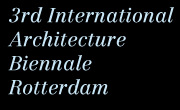In our fast-globalizing world, international competition is increasingly a battle of cities: that’s where the money is made, where physical and digital networks link up, where culture flourishes and science grows. Everywhere, including in the Netherlands.
The competitive position of Dutch cities in general and the Randstad in particular, however, is under a lot of pressure. The fact that Asian ‘tigers’ like Beijing and Shanghai have overtaken the Randstad in recent years does not come as a surprise. But closer to home, Greater London, the Ruhr Area, the Flemish Diamond and the Paris Region are all performing better as well. So, what’s up?
Its spatial structure of close-set cities and villages separated by a patchwork of green made the Randstad unique in the world. Actually, it is a single city with several centres – which is exactly how it is used by the majority of its inhabitants. But the Randstad is now rapidly losing these features.
The road system is congested, railway lines are overtaxed, travelling times are rocketing. Recent decades saw the total fragmentation and disintegration of the Green Heart, with festering industrial areas along motorways blocking the traveller’s view of what’s left. The Randstad is losing its appeal as a place to live and work.
Scale Increase
If recent trends persist, the Randstad will soon be a continuous urban body – one that does not, however, function like a metropolis and is not run like one either. For the mobility networks and landscape structures required for a well-run Randstad cross traditional city limits and province borders.
To turn the negative tide and revitalize the Randstad, the Netherlands has to think, design and govern on a higher scale level. The administrative collaboration required to provide for the Randstad’s future is now being realized in the North Wing Programme (Amsterdam, Almere, Utrecht and Schiphol) and the South Wing Workshop (The Hague, Delft and Rotterdam).
North - South
The North Wing and South Wing organizations are developing integral views on, and projects for, a future Randstad. But each at the other end of the field: a somewhat bloodless Green Heart left in the middle. Administratively speaking, scale increase appears to be limited, too.
The approaches of each of the Randstad Wings reveal traditional cultural differences between Amsterdam and Rotterdam: dreams versus deeds and culture versus infrastructure. Their plans will be influential, certainly, but as yet they are little known. To facilitate public discussion, the New Dutch City exhibition presents them side by side. And asks: ‘Is this the city we want?’
North Wing
Both economically and demographically, the North Wing represents the fastest growing part of the Netherlands. About a third of the Dutch population lives and works in this area.
Schiphol, still one of the world’s major airports, now mainly continues to grow because of an increasing number of transfer flights. Amsterdam would like to persuade these transients to stick around for a while. The Destination AMS plan is primarily focused on the imago of Amsterdam as a centre of culture and international trade and a city of glorious tradition and ongoing rejuvenation. The biennale commissioned 20 artists to portray what Amsterdam was, is and, last but not least, could be.
Trump card of the nearby ‘new city’ of Almere is its scenic location between a vast coastal strip and green polder lands. The exhibition includes the design Mecanoo architect Francine Houben created for a Randstad City Beach south of Almere. In addition, plans for the realization of 20,000 dwellings in the Haarlemmermeer and the development of both North Sea Canal banks are on view.
South Wing
The Randstad South Wing consists of a web of cities, villages and infrastructure. The South Wing projects that are part of the New Dutch City exhibition are based on this cobweb structure.
The City Link project covers the existing infrastructure in a fine-meshed and frequent public transport system. Local tram and metro networks connect with it and thus revitalize, for instance, old industrial sites like Binckhorst in The Hague, for which OMA drew up plans. Rotterdam, like The Hague, focuses on increasing the density of the existing city, with a plan to realize 30,000 low-rise dwellings within the ring way plus a tribute to the rising Rotterdam skyline.
And once the city draws back behind its limits and traffic infrastructure is contained, maybe then there will be room for a plan by West8 landscape architect Adriaan Geuze. He designed an administrative and spatial ‘counter mould’ for the city, which is supposed to secure one of the most precious jewels the Randstad has: its open countryside.


